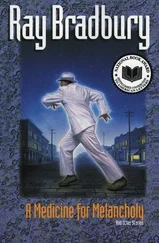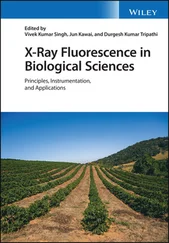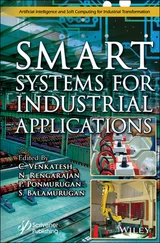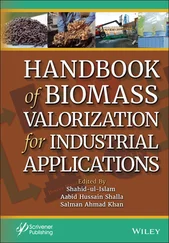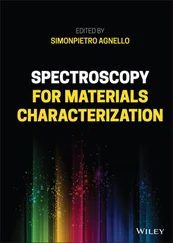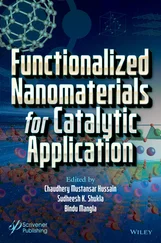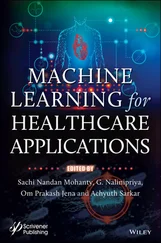
Dr. Jörg Flockwas for many years the head of the central laboratory of ThyssenKrupp Steel AG and therefore familiar with several analytical methods, in particular with X-ray fluorescence spectroscopy. He has a lot of practical knowledge for the analysis of various sample qualities.

Michael Haller, M.S.,has been using X-rays as an analytical tool for over 30 years, first in X-ray crystallography and then later in the development and application of polycapillary X-ray optics. During the majority of his career, he has developed new applications for coating thickness instruments in industrial process control. In 2018 he became co-owner of CrossRoads Scientific, a company specializing in the development of analytical X-ray software.
X-ray spectrometry has been known as a method for element analyses for more than 70 years and can be regarded as a routine method since the 1960s. This means that there is a broad range of instruments available, and numerous analytical tasks are carried out routinely by X-ray fluorescence (XRF) analysis. For example, XRF is used for the characterization of metallic or geological materials or for analyses of solid or liquid fuels despite the fact that other elemental analytical methods have been developed and are readily available for these applications. Among them are optical emission spectrometry with excitation both by sparks and by inductively coupled plasmas and mass spectrometry. The high importance of using XRF is due to the fact that one can achieve very high precision over a wide concentration range. XRF also requires little effort with sample preparation and the method can be automated.
Especially in the last 15–20 years, XRF has experienced a new boom mainly because the technology has further developed, and new fields of applications could be opened up. These include, among others, the analysis of layered materials and high-resolution position-sensitive analysis. This was made possible by the availability of new components for X-ray spectrometers.
The development of high-resolution energy-dispersive detectors with good count rate capability now allows precision measurements also with energy-dispersive spectrometers. The simultaneous detection of a wide energy range over a large solid angle made possible with these detectors allows not only short measuring times but also special excitation geometries. It is therefore now possible to achieve higher sensitivities in the detection of traces; further, the fluorescence radiation of small surface areas can be detected with sufficient intensity.
The development of various X-ray optics allows shaping of the primary X-ray beam and thus the concentration of high excitation intensity on small sample surfaces; this development was the key to opening up new applications in the field for a spatially resolved analysis.
These developments have significantly expanded the range of applications of XRF analysis.
However, the most important influence in the further development of XRF into a routine method was the advances in data processing technology. These made it possible to automate instrument control as well as the evaluation of measurement data. Not only was it possible to reduce subjective influences by a manual operator but also the processes during instrument control and measurement data acquisition could largely be automated and made more effective. The evaluation of the measurement data, such as the peak area calculation in case of overlapping peaks, or the calculation procedures for the quantification could be expanded and significantly refined by the available computing power.
These improvements have been particularly important because X-rays strongly interact with the sample matrix, which requires complex correction procedures. Nevertheless, in contrast to other analytical methods, the physics of these interactions is very well understood and can be exactly modeled mathematically. Consequently, in principle, standard-less analysis is possible, which again requires a high computing effort.
As a result of these developments, new methodical possibilities for XRF emerged, combined with an expansion of their field of applications. For this reason, it seems to be meaningful to carry out an up-to-date compilation of the applications currently being processed by XRF, in combination with a discussion of both the necessary sample preparation and instrument-related efforts and the achievable analytical performance. There are several very good books available, which however, due to their date of publication, have not been able to take into account the developments of the last 15–20 years (Erhardt 1989; Hahn-Weinheimer et al. 2012) or they do not adequately address frequently used routine applications, in particular in industrial analyses (Beckhoff et al. 2006; van Grieken and Markowicz 2002).
The goal of this book is to focus on the practical aspects of the various applications of XRF. This leads to the discussion of the requirements necessary for the analysis of the very different sample qualities, such as the type of sample preparation, the available measurement technique or the required calibration samples, as well as the type and quality of the results to be expected with these efforts. This appeared to be important, in particular, because XRF is often used in many laboratories, but methodical studies are carried out only in very few of them.
This leads to the application aspects often not being understood very well. Consequently, the analytical results are accepted without scrutinizing the influence of sample state, preparation methods, and measurement parameters. This becomes especially true because complete results are often available as the outcome of an instrumental analysis and their quality cannot be correctly comprehended.
In order to assure the quality of the applications and their results, the analyst must critically question all aspects of the test method. For this purpose, a basic understanding of the influences of sample condition, preparation methods, measurement parameters, and evaluation models used on the quality of the analytical result is imperative.
Therefore, we are deliberately focusing on the daily laboratory work with commercially available instruments. On the other hand, the interesting but not routine applications of the method utilizing synchrotron radiation excitation are not addressed. Nevertheless, methodical developments obtained on a synchrotron are often incorporated into laboratory analysis, such as micro-X-ray fluorescence (μ-XRF) or applications with grazing beam geometry. However, this book treats only laboratory applications. If any of these newly developed methods have been implemented into special laboratory instruments these are also presented as examples.
Despite the focus on the various applications, a brief introduction to the fundamentals of X-ray spectrometry and a comprehensive presentation of the basic steps for a complete analysis are required in order to be able to relate in the following discussion of the individual applications.
The book therefore starts with a discussion of the analytical capability of X-ray spectrometry in Chapter 2. The most important relations that describe the generation of the characteristic radiation are presented, and the individual steps in the execution of an analysis follow, along with a brief characterization of their influence on the analysis result. Deeper descriptions of the physical bases are comprehensively given in other publications (e.g. Erhardt 1989; Hahn-Weinheimer et al. 2012; van Grieken and Markowicz 2002; Beckhoff et al. 2006).
Читать дальше



